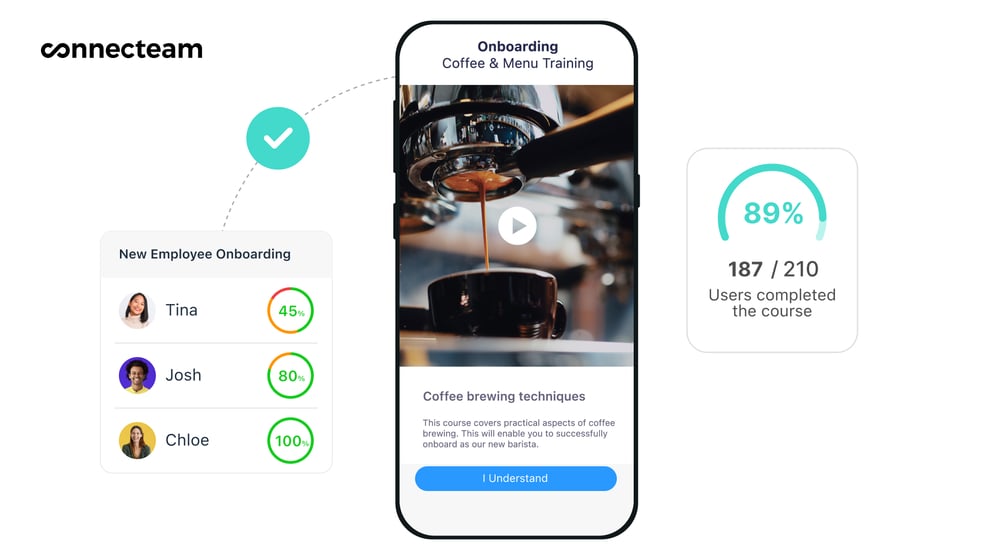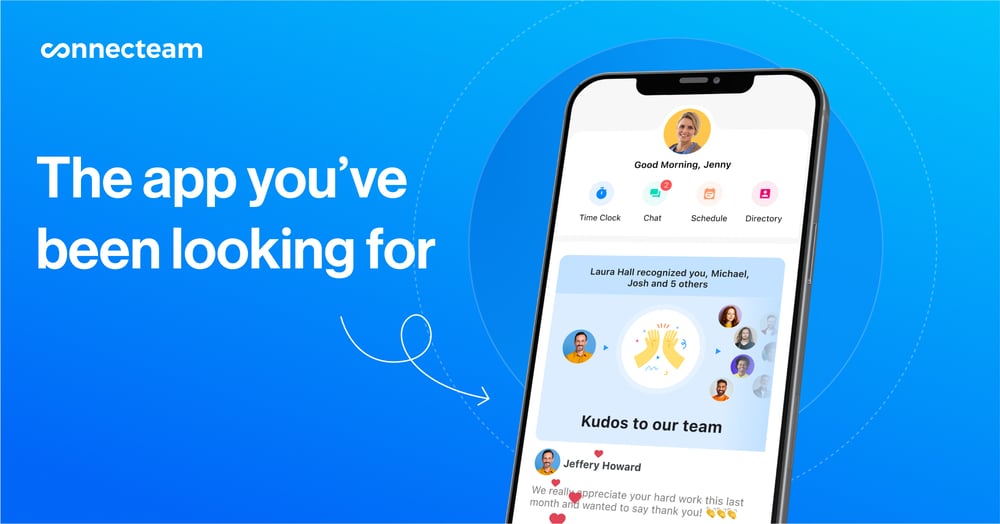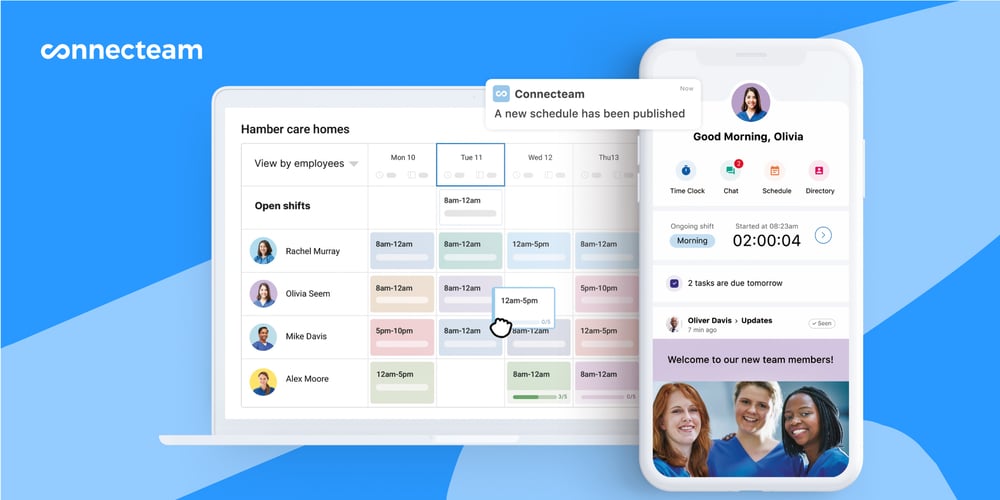From high turnover rates to difficulty attracting new workers, the restaurant staff shortage hit the industry hard. Learn how to move on from here and proof your business.
If you own or manage a restaurant, you’re familiar with the challenges of running a food service business.
Restaurant staff shortages can drag down your entire business, but there are ways to minimize their effects on your bottom line and customer experiences.
In this article, I’m going over the causes of restaurant staff shortages over the past 3 and a half years and the current industry status.
I’ll also offer 8 helpful tips on what your restaurant business can do to help ensure your business doesn’t suffer if you happen to be facing a staff shortage today.
What Caused the Restaurant Staffing Shortage in the First Place?
The pandemic and recession were the two major drivers of restaurant staff shortages across the country.
And even though 3.5 million workers came back to work in 2021, there were still an average of 500,000 more job openings than new hires between October 2021 and March 2022.
So this begs the question: why did fewer former restaurant employees return to the industry?
When COVID lockdowns and layoffs forced people to stay home in 2020, many restaurant workers realized the toll their demanding and fast-paced work had taken on their mental and physical health.
Many workers began to rethink how they might reenter the labor market, and while some turned to gig work or self-employment, others started new careers and stuck with them even in a post-pandemic world.
One example is Emilia McGrath, who worked in restaurants most of her life and was laid off because of the pandemic. She ended up changing careers to work in a children’s museum when businesses began reopening in 2021.
McGrath told the Washington Post that what began as a short-term plan ended up being a permanent one.
Despite the fact that she now earns less money, she has far better benefits, including PTO, health insurance, and a predictable schedule that doesn’t require her to work nights and weekends.
Exacerbating the situation even more, when the pandemic hit, many older adults retired early to reduce their exposure, opening up positions in professional and business settings for workers looking to get out of the restaurant industry.
This major shift in the labor force made room for former restaurant employees to move into these roles, and many ended up staying for the same reasons McGrath did: better benefits and working hours, as well as a more stable income.
According to the Post: “Labor economists say there has been a discernible shift away from service-sector work, which has altered the US job market and possibly reshaped it for the long term.”
The Current State of Staff Shortages in the Restaurant Industry
As lockdowns eased and vaccines became available, restaurants slowly began to reopen, but many workers had moved on to jobs in other industries, and job openings were still twice the number compared to pre-pandemic levels.
To attract and retain qualified workers, restaurants had to face this reality head-on and offer higher pay rates and better benefits than what was standard before the pandemic.
Fortunately, these strategies seem to be working, and the number of job openings has decreased significantly throughout 2023.
The service industry filled approximately 40% of these positions throughout the year, with 1.2 million open restaurant jobs remaining.
To provide some context, before the pandemic hit at the end of 2019, there were about 965,000 open restaurant positions, so it’s clear that the industry is on the right track.
But recession, changing consumer preferences, and higher food costs still leave restaurants in a state of uncertainty.
Many of the changes the restaurant industry experienced in the past 3 years are likely here to stay.
According to the Washington Post, 16% fewer diners are eating in at restaurants compared to pre-pandemic levels. But these diners aren’t gone; they have changed their eating out habits to off-premise dining, especially delivery and drive-thru.
“The dine-in business is going to be radically smaller than it was, with much more focus on takeout orders, a huge shift in the basis of competition to be all about technology and convenience,” David Henkes, a senior analyst at market research firm Technomic, told the Washington Post.
What Now? Lessons Learned and 8 Tips for Moving Forward
While the labor market has shown signs of improvement, many restaurant operators are still desperately looking for qualified restaurant staff.
With the right strategy and tools, you can find the right staff and provide outstanding service in 2024.
Below, I have collected a number of tips to help you ensure your restaurant’s survival in this tight labor market, rising costs, and an uncertain economy.
Invest in employee training
A Toast study found that employees are more likely to be satisfied with their jobs if they receive two or more weeks of training. However, nearly 74% of restaurant staff receive less than this.
Investing in employee training not only makes sure your staff has the knowledge they need to do their jobs, but it gives your business a competitive edge. A training program motivates employees and improves retention rates by building their confidence and creating a positive company culture.

You may also want to cross-train your employees to combat staff shortages. This will allow more flexible scheduling so you can easily fill in shifts if team members are unable to work.
💡 Pro Tip:
Use an employee training app so staff can complete training on the go and get up to speed as fast as possible.
With Connecteam, you can create your own customized training courses and upload all the materials you need right into the app, whether it’s with documents, PDFs, videos, or quizzes. You can also assign multiple job titles per employee and they can choose which role they’re clocking in for when they clock in with the employee time clock from their phones. The app automatically tracks everyone’s hours and ensures staff are paid accordingly.
Offer contactless ordering and payment options
Contactless ordering and payment systems can actually improve the customer experience by offering a quick and efficient way to dine. They also shorten these processes and free up your staff by reducing their interaction time with guests.
A system like UpMenu, for example, provides guests with a QR code on each table in your restaurant. When they scan the QR from their mobile devices, they’re brought to an online menu where they can also place orders. You can customize your online menu, too, so it matches the brand and vibe of your restaurant.
Retain top talent by offering incentives and recognizing your staff
Many people leave the restaurant industry because of poor working conditions, so it’s important to keep up morale if you want to hang on to your staff. Your employees may be working extra shifts to compensate for a shortage, which can leave them feeling overworked and unmotivated.
Make employee recognition a primary focus of your business by acknowledging your team members’ hard work and rewarding them for it. Thoughtful presents like gift cards, a nice bottle of wine, or even an extra paid day off can go a long way.

These touches help your staff feel recognized, appreciated, and more satisfied in their jobs, so they’re more likely to stick around for the long term.
🧠 Did You Know?
With Connecteam, you can provide employees with digital badges to show your appreciation and acknowledge significant milestones. You can also reward them with points for redeemable gift cards to their favorite retailers and restaurants, a great way to say thank you for their hard work.
Schedule your staff appropriately
A smaller staff means it’s more difficult to create fair schedules with evenly dispersed shifts.
However, an employee scheduler is incredibly helpful for optimizing the entire process.
Connecteam, for example, comes with an intuitive drag-and-drop scheduler that provides a clear overview of everyone’s availability, working preferences, time off, roles, and qualifications. It automatically calculates everyone’s hours so you can create fair schedules free of scheduling conflicts. It will also alert you if someone is scheduled to go into overtime so you can approve or correct this.
Another great feature is the ability for employees to swap shifts directly within the app, with manager approval. This allows your team to work more flexibly while still ensuring you have the coverage you need.
Prioritize team communication
Team communication is crucial for maintaining alignment among employees, understanding roles and responsibilities, and feeling valued and connected to the restaurant’s goals.
Invest in an app with online team chat to streamline restaurant communication where you and your staff can chat 1:1, ask questions, and collaboratively problem-solve time-sensitive issues.
A chat app can also improve customer service and guest experiences, for example, by enabling staff to quickly and easily communicate about special customer requests.

Look for an app that comes with a company updates feature, too. You can share important announcements, check in with your team, and use likes and emojis to keep the mood upbeat.
This is a great place to share positive customer reviews, financial wins, and amazing new dishes with everyone to promote comradery and a positive team culture.
Reduce your restaurant’s hours
Restaurant staff shortages are often caused by poor working conditions, such as working too many hours. Reducing your opening hours to accommodate a smaller staff will not only prevent your team from burnout, but it will save you money on labor costs.
But how do you identify which hours to cut? Take a look at your books and figure out the busiest, most profitable hours and prioritize them. This might mean not offering lunch for a temporary period and only opening for dinner, or vice versa. At the end of the day, it’s about determining where you can make the most revenue and redirecting your efforts to these shifts.
Reduce your menu size
Reducing the number of items on your menu simplifies kitchen operations and reduces the workload of your kitchen staff.
Work with your chef to create a smaller menu. You’ll need to figure out which dishes are the most profitable and popular and take less effort to make. Keep the frequently ordered items on the menu and remove the others to save on both food and labor costs.
Take advantage of restaurant technology
Technology is designed to make you and your staff’s lives easier, so take advantage of what it has to offer.
An employee management app, like Connecteam, helps you streamline restaurant operations and keep your business up and running even while facing a staff shortage. You can maximize the manpower you do have while keeping your entire team aligned and engaged.
The app comes with tools like an intuitive employee scheduler, employee time clock, communication and task management features, training and onboarding tools, document storage, and more.

Everything is accessible right from your mobile device, so you and your team members can reach each other whenever you need.
And while Connecteam is a great option for restaurant management software, you may also want to invest in a POS system, reservation system, and accounting software if you don’t have these already.
📚 This Might Interest You:
Read our full guide on the best restaurant management software to find the one that’s right for you.
You can also take advantage of our free templates to streamline restaurant operations:
- Restaurant Closing Checklist
- Opening Restaurant Checklist
- Restaurant General Manager Duties Checklist
A Restaurant Staff Shortage Doesn’t Define Your Business
Restaurants aren’t just places to eat; they’re where people go to celebrate, socialize, and create memories. And even if your business is facing a staff shortage, your business can still thrive and be a place where people come for these experiences.
By taking advantage of the strategies mentioned in this article, you can make sure your team is aligned, happy, and not overworked, minimizing the effects on guest experiences and keeping your restaurant’s doors open.


